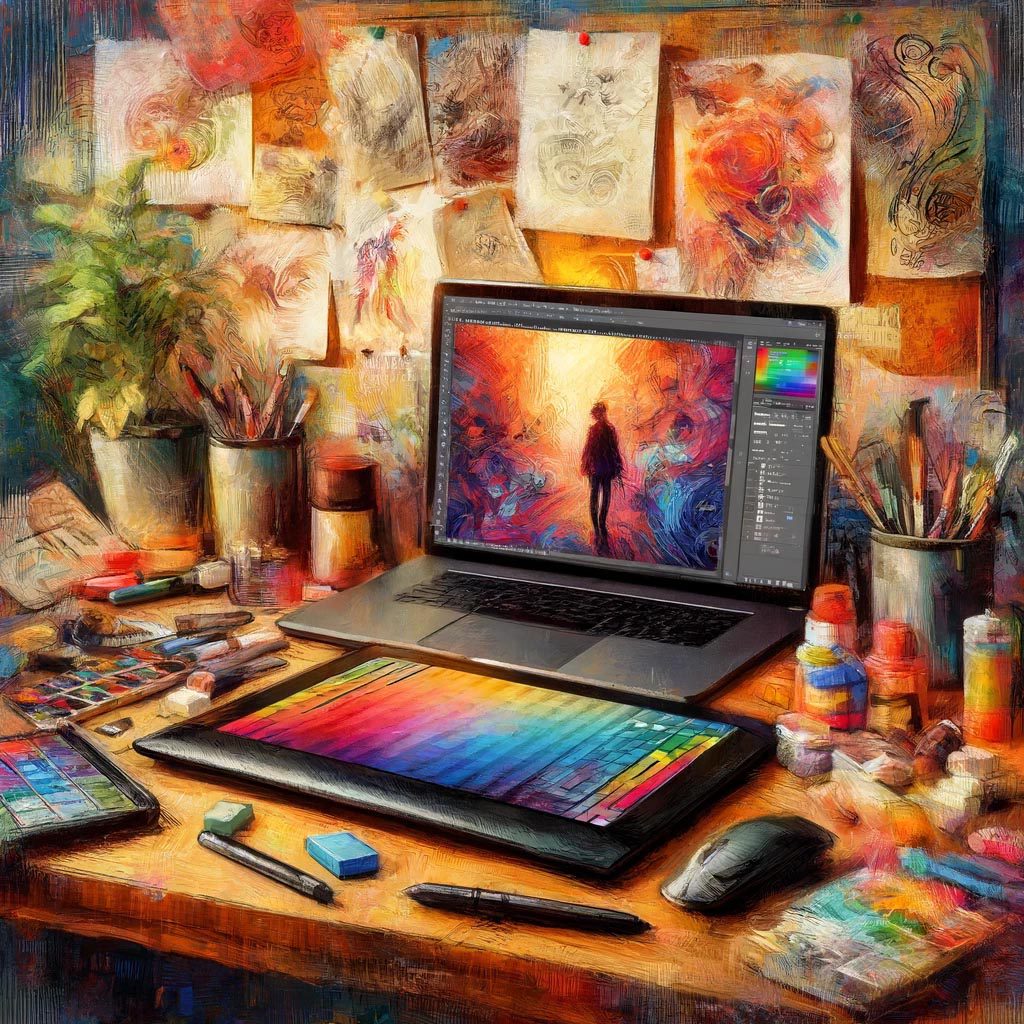
Absolute Adobe beginners… welcome! Let’s get your toes dipped in the somewhat intimidating world of graphic design software. Anyone stepping into the dynamic world of digital design, mastering Adobe is akin to an artist learning to mix their colors. These powerful tools—Photoshop, Illustrator, and InDesign—serve as the backbone of professional graphic design, visual communication, and digital artistry. Whether you’re aiming to boost your career, start a new one, or simply enhance your creative projects, proficiency in Adobe programs is crucial. In this Adobe graphic design tutorial, we will touch on each of these essential tools, providing you with step-by-step guidance, expert tips, and a few personal anecdotes to help you begin your journey towards mastery.
Starting with Adobe Photoshop
Adobe Photoshop is a powerhouse for image editing and manipulation. Known for its layers-based editing system, it allows for high flexibility and fine control over the final image.
Essential Tools and Their Uses
Photoshop’s toolkit is vast, but some tools are foundational:
- Brush: Essential for digital painting and retouching images.
- Clone Stamp: Allows you to duplicate parts of an image.
- Layer Masks: Permit non-destructive editing to show or hide parts of an image without altering the original.
Let’s create a basic photo montage:
- Open a new file.
- Import several images.
- Use layer masks to blend images together.
- Adjust color balance to unify the image’s look.
Pro Tips
- Keyboard Shortcuts: Learn them. For example, pressing ‘B’ selects the Brush tool, speeding up your workflow considerably.
- Adjustment Layers: Use these for non-destructive edits to color and brightness.
When I first used Photoshop, I spent hours manually correcting colors because I wasn’t aware of adjustment layers. Learning this one feature cut my editing time in half!
Section 2: Mastering Adobe Illustrator
Unlike Photoshop, which uses pixels, Illustrator deals with vector graphics. These are composed of paths, which are scalable to any size without losing quality—ideal for logos and other scalable artwork.
- Pen Tool: Essential for drawing precise paths.
- Shape Tools: Quickly create geometric shapes.
- Pathfinder: Combine, subtract, or intersect shapes to create complex designs.
Design Exercise
Design a logo:
- Sketch a few ideas.
- Use the Pen tool to trace your sketch.
- Employ the Shape tools to refine your logo.
- Use Pathfinder to merge shapes creatively.
Expert Advice
- Layer Management: Keep complex illustrations organized by using layers efficiently.
In my early days, a client requested a logo redesign that needed to be done overnight. Thanks to Illustrator’s Pathfinder tool, I combined elements from old designs and crafted something fresh in record time.
Section 3: Navigating Adobe InDesign
Adobe InDesign specializes in layout design for publishing, perfect for magazines, brochures, and books.
- Document Setup: Always start with the right page size and margins.
- Using Grids: Grids help in aligning elements uniformly across the layout.
Interactive Project
Create a simple three-fold brochure:
- Set up a new document.
- Design each panel, placing text and images strategically.
- Print a test to check alignments and readability.
InDesign Secrets
- Master Pages: Use these to apply consistent headers, footers, and page numbers.
Section 4: Integrating Adobe Software
Often, a project will require the use of all three programs. For instance, you might create graphics in Illustrator, edit images in Photoshop, and then bring everything together in InDesign.
Let’s say you’re creating a campaign:
- Design icons and elements in Illustrator.
- Enhance photos in Photoshop.
- Layout the campaign in InDesign.
Tips for Seamless Integration
- Smart Objects: When using Photoshop images in Illustrator, convert them to Smart Objects to maintain quality and allow for non-destructive scaling.
Section 5: Advancing Your Skills
Books, online tutorials, and workshops can all enhance your understanding and proficiency.
Engage with forums and social media groups to learn from and contribute to a broader community of designers.
Adobe frequently updates its software. Keeping current can provide you with new tools and streamline your workflow.
Conclusion
We’ve covered a lot, from the basics of each program to integrating them into a single workflow. The journey to becoming proficient with Adobe’s suite isn’t always quick, but it’s rewarding. With regular practice and a bit of creativity, you’ll not only master these tools but also unlock your potential as a designer.
Now, take these tips and apply them to a small project. Share your results online and see how far you’ve come. Remember, every expert was once a beginner. Happy designing!




